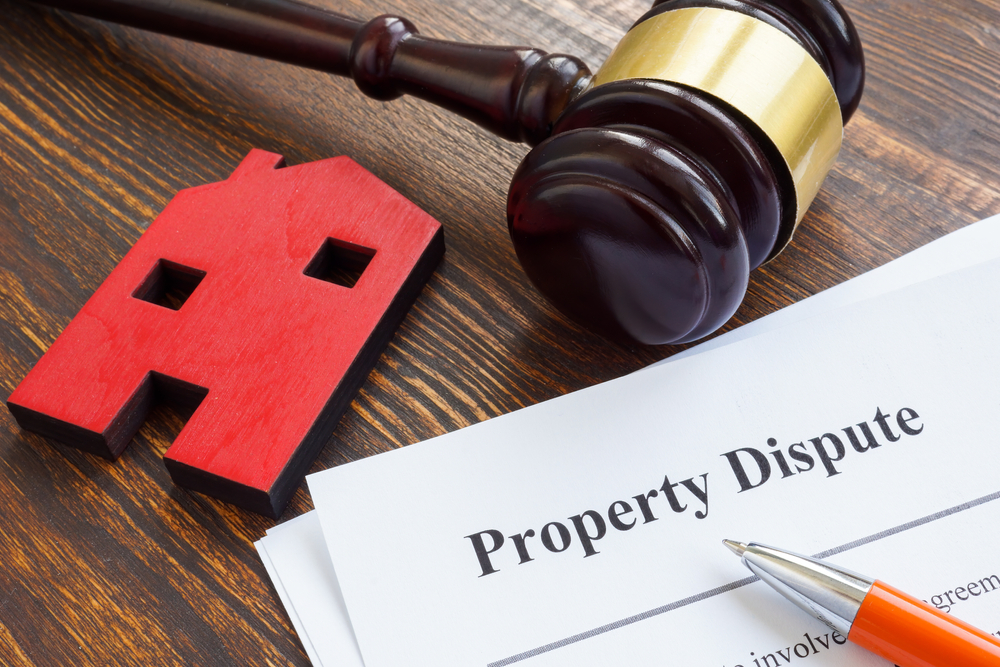Property disputes: Built on land you thought was yours but turned out not be? What to do next.
Disputes with a neighbour over land and boundaries can be complicated, stressful and ultimately expensive as one couple caught up in an unexpected and unfortunate argument have found recently.
Wayne and Natalie Noke have been ordered to demolish the £100,000 extension they added to their cottage – after planning permission had been approved – because they unwittingly built part of it on land that doesn’t belong to them.
Known as illegal encroachment, Mr and Mrs Noke are now locked in a battle with Forestry England, which owns the land around the cottage, with the outcome likely to be decided not by a court but by a process of alternative dispute resolution.
- Specialist legal advice is vital in these situations as the law around establishing a property’s legal boundary can be complex. Wards Solicitors’ James Murray is extremely experienced in this area and can help if you find yourself in a similar situation.
What happened in this illegal encroachment dispute?
The Nokes paid £2.1 million in 2021 to buy a five bedroomed home and accompanying cottage in Hampshire’s New Forest.
They successfully applied for planning permission to extend the cottage so Mrs Noke’s parents could live there, independently but close by as her elderly father has Parkinson’s.
Building work had almost finished when Forestry England told the couple that the cottage had a strip of land around it on three sides which did not belong to them. In addition, said Forestry England, a licence prevented the Nokes from building on it.
Neither the Nokes’ conveyancing solicitor nor the previous homeowner were aware of the licence as it was not on the property’s title deeds.
As Mr Noke says: “I would not have applied for planning permission if I thought the land did not belong to me.”
What happens next in this real property dispute?
Mr Noke has applied to the ancient body responsible for the forest, the New Forest’s Verderers’ Court – for permission to do a land swap with Forestry England.
Only agreed in exceptional circumstances, a land swap will only have a chance of success if Forestry England puts forward a proposal everyone agrees with.
A Forestry England spokesperson said: “We have been in discussion on this matter with Mr Noke directly and via legal representation since the very early stages of the building work.
“The issues focus on building carried out on Forestry England land designated and protected as part of the New Forest. While these discussions are ongoing, we can’t provide further comment.”
In the meantime, Mr Noke’s building work must stop and his father-in-law cannot move into the cottage.
Would checking the property’s title deeds have avoided this boundary dispute?
In many cases, checking your title deeds – the legal document that proves ownership of a property as well as listing any restrictions or charges – before starting building work will tell you everything you need to know to move forward with certainty.
In any case, it’s a good place to start.
Mr Noke said he and his solicitors did this. However, the problem is that the accompanying title plan, which shows the boundaries of a property, doesn’t necessarily represent the exact position of the boundary on the ground.
This is because a title plan is usually subject to what’s known as ‘general boundaries rules’. This means the Land Registry relies on Ordnance Survey plans to give a general rather than an exact indication of where the legal boundary lies.
There are ways you can establish your exact legal boundary but if you have started building, or you think someone is building on your land, and a problem comes up, specialist legal advice is a must.
Get in touch
Wards Solicitors wins high praise in the 2024 edition of the independent Legal 500 Guide of outstanding legal professionals for its exceptional professional service standards and high levels of technical expertise.
For specialist help and advice about neighbour, boundary and building disputes, please contact James Murray who is highly experienced in this area of the law and has dealt with a wide range of issues including the position and use of boundaries, damage caused by tree roots, infringing rights of way and rights of light, trespass and harassment.
Email: James.Murray@wards.uk.com
Phone: 0117 929 2811


